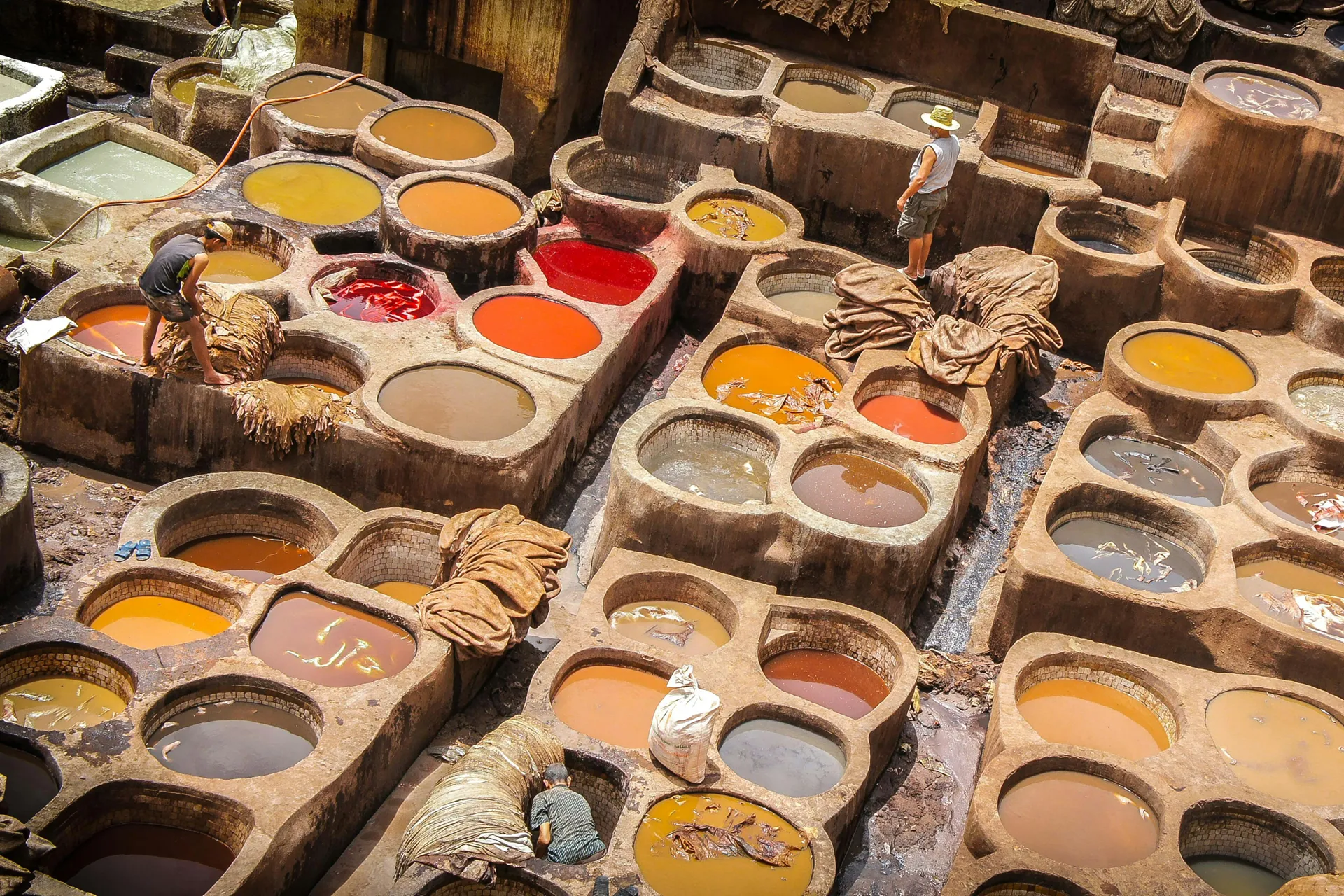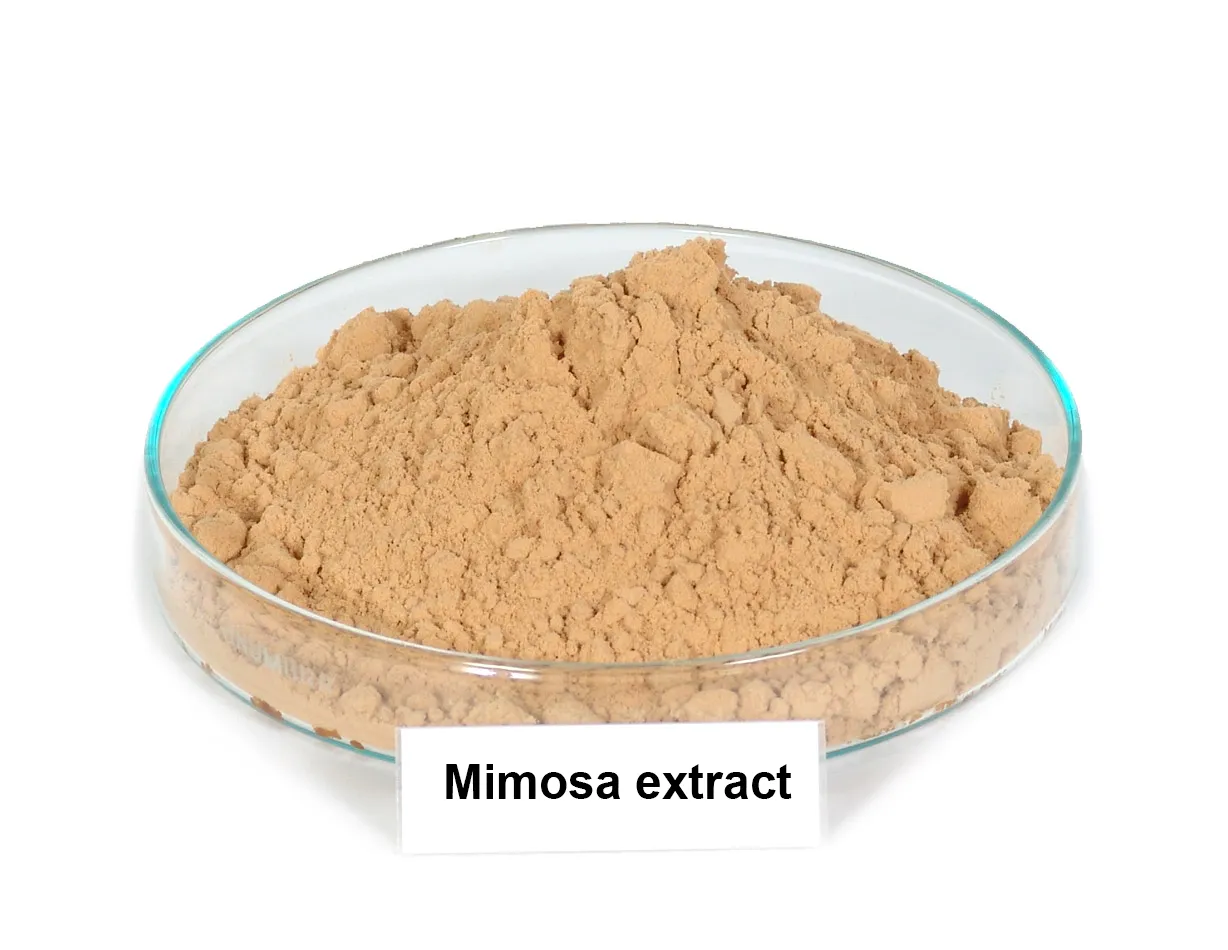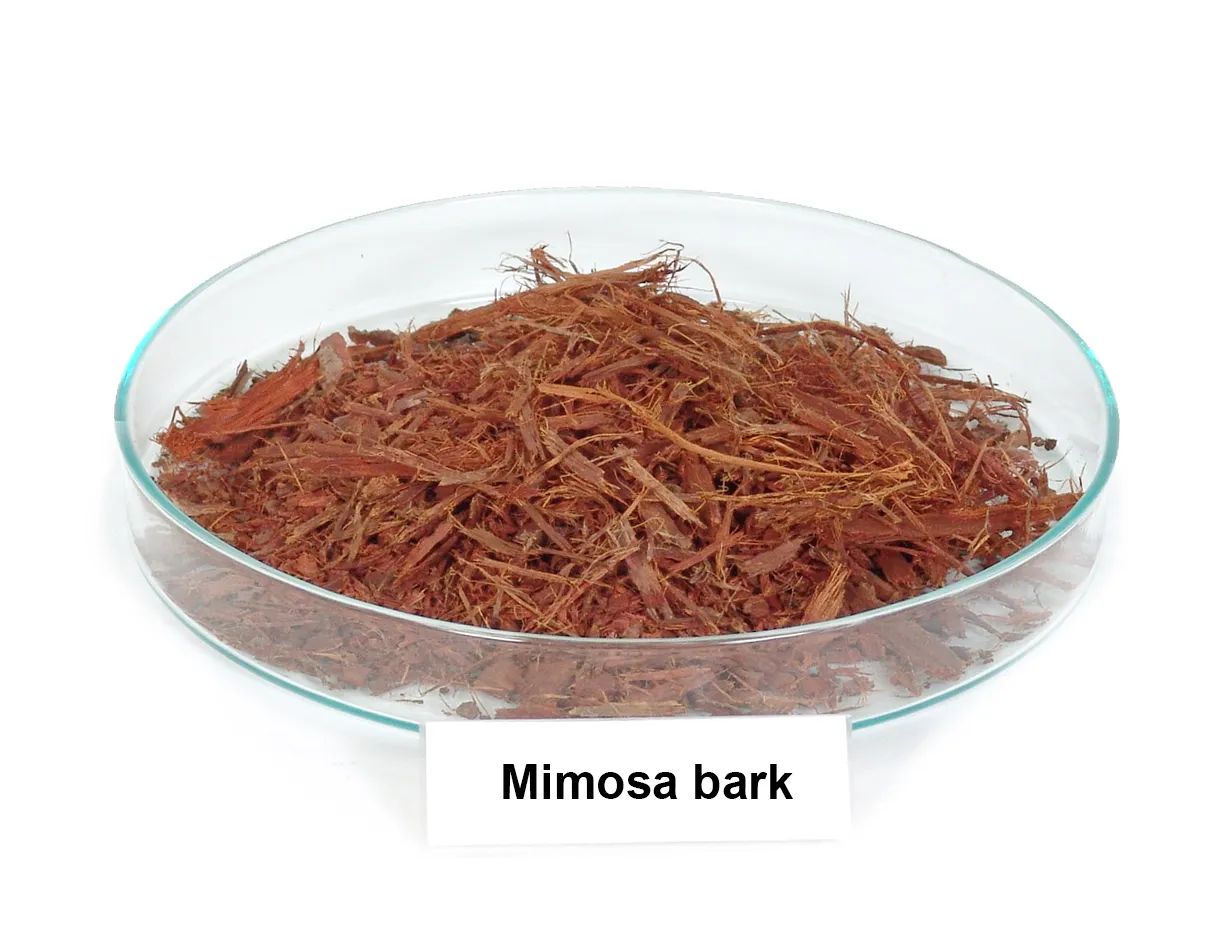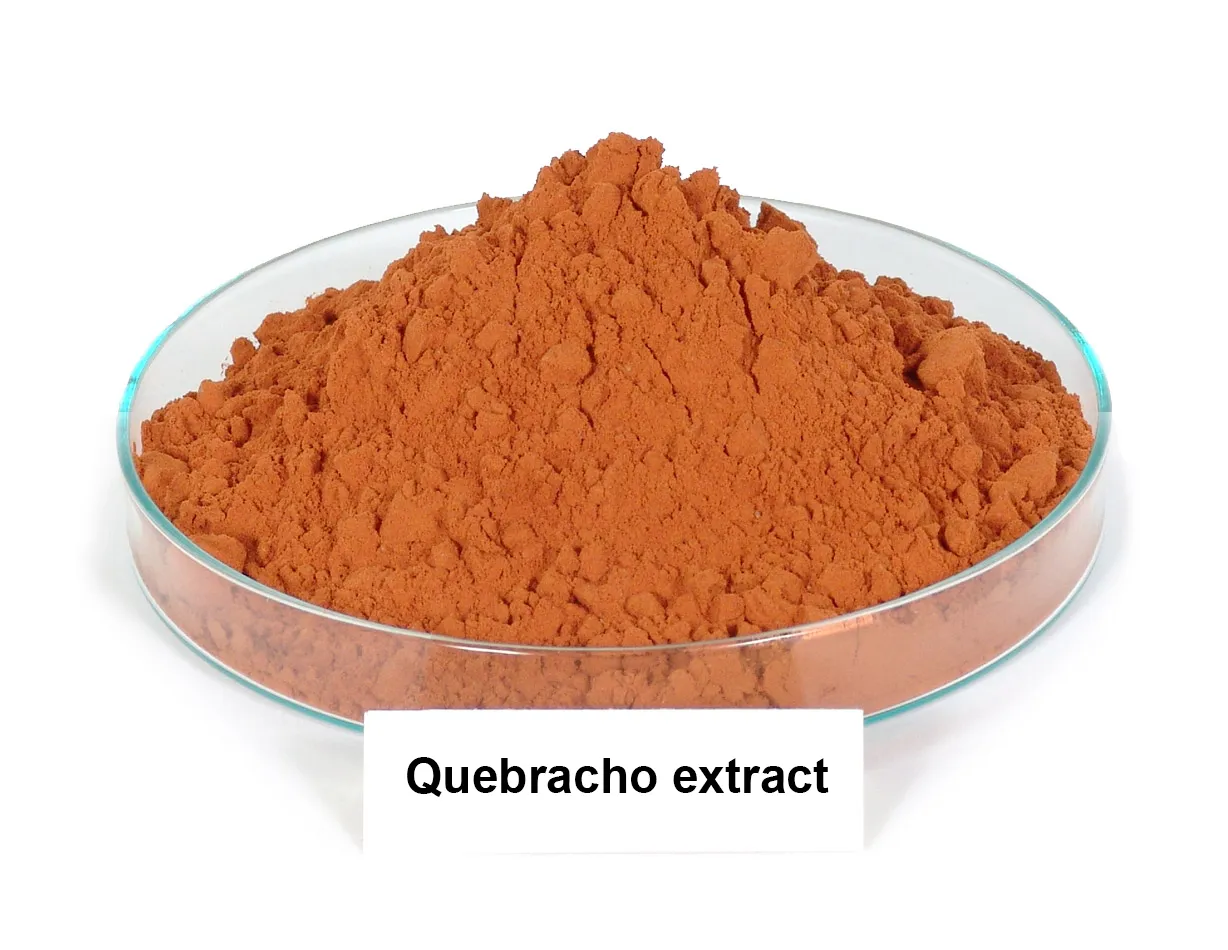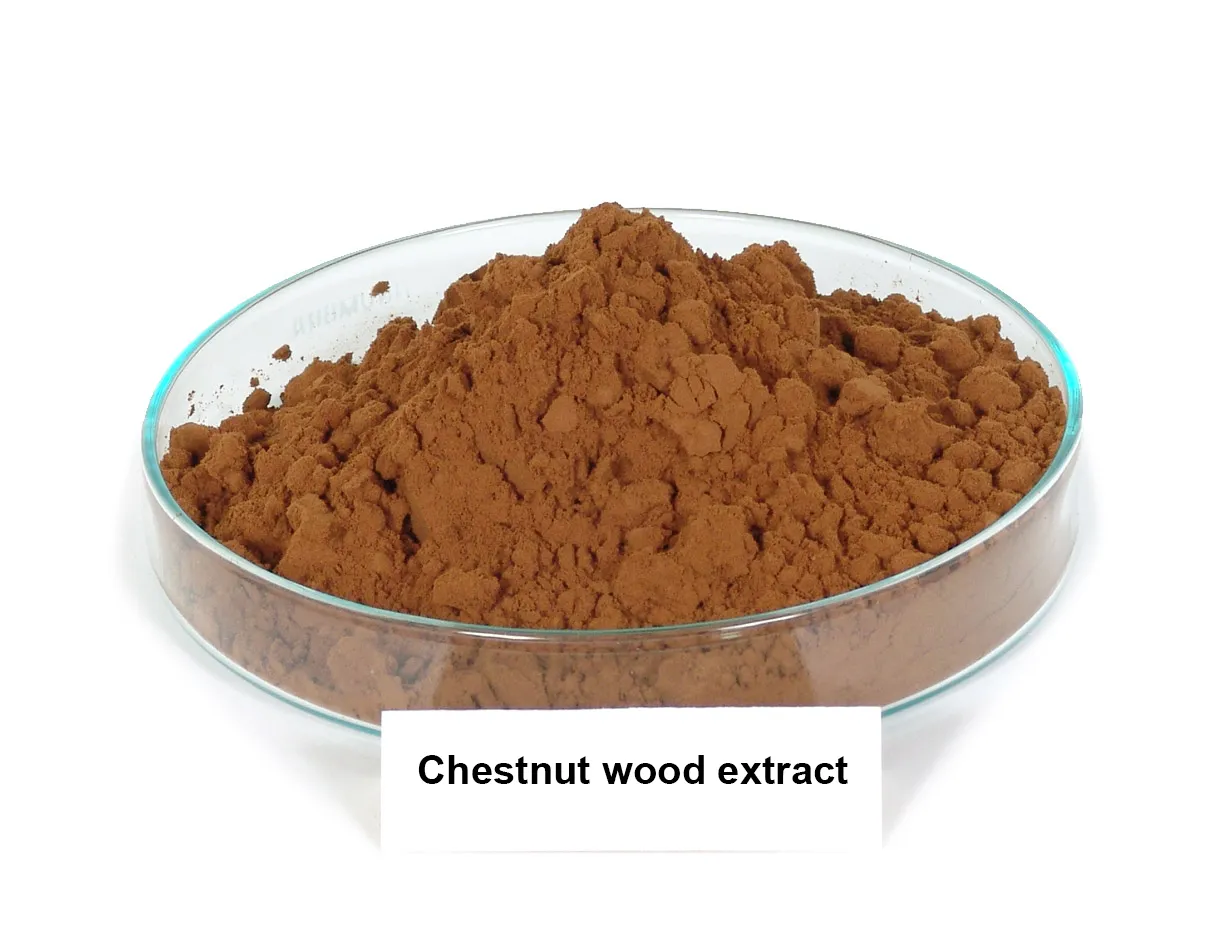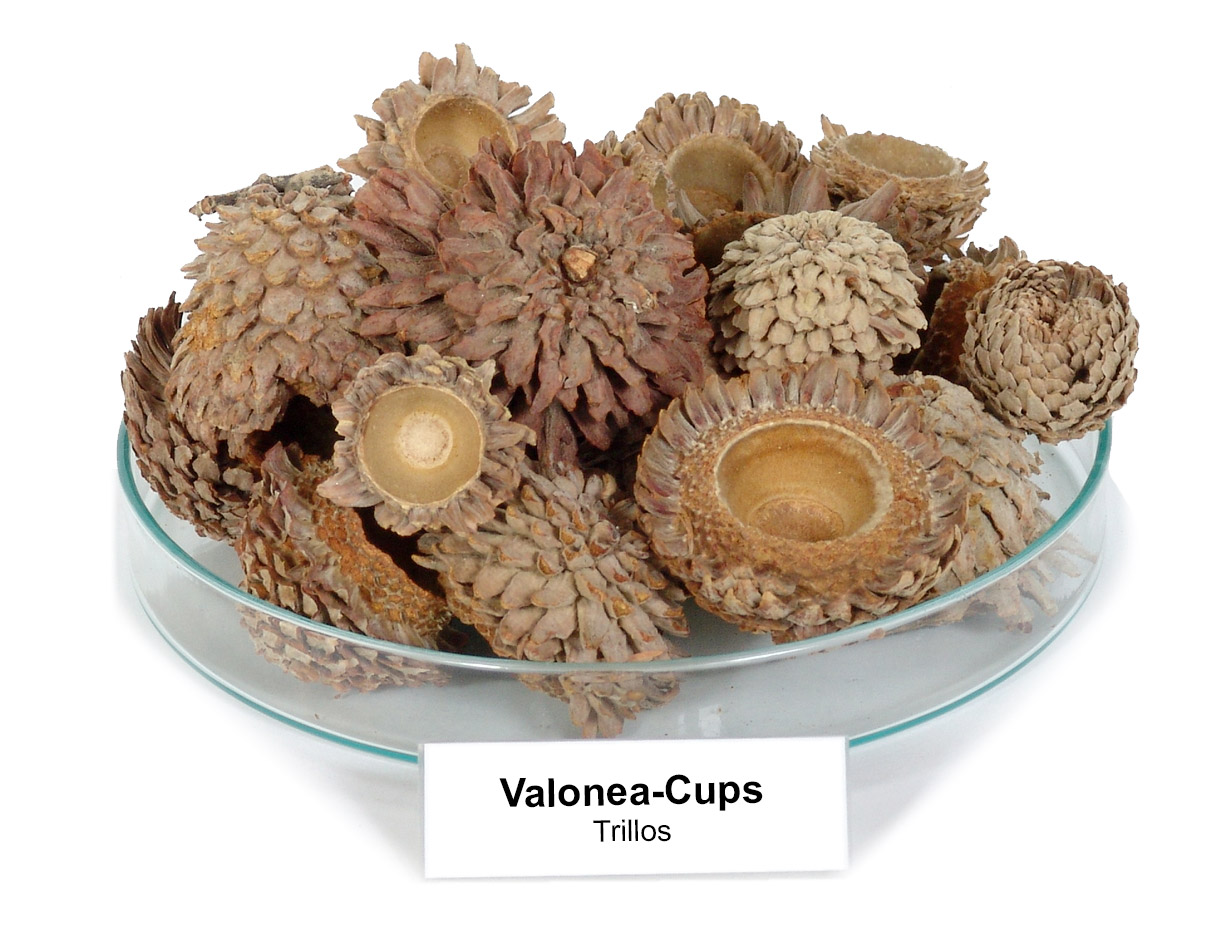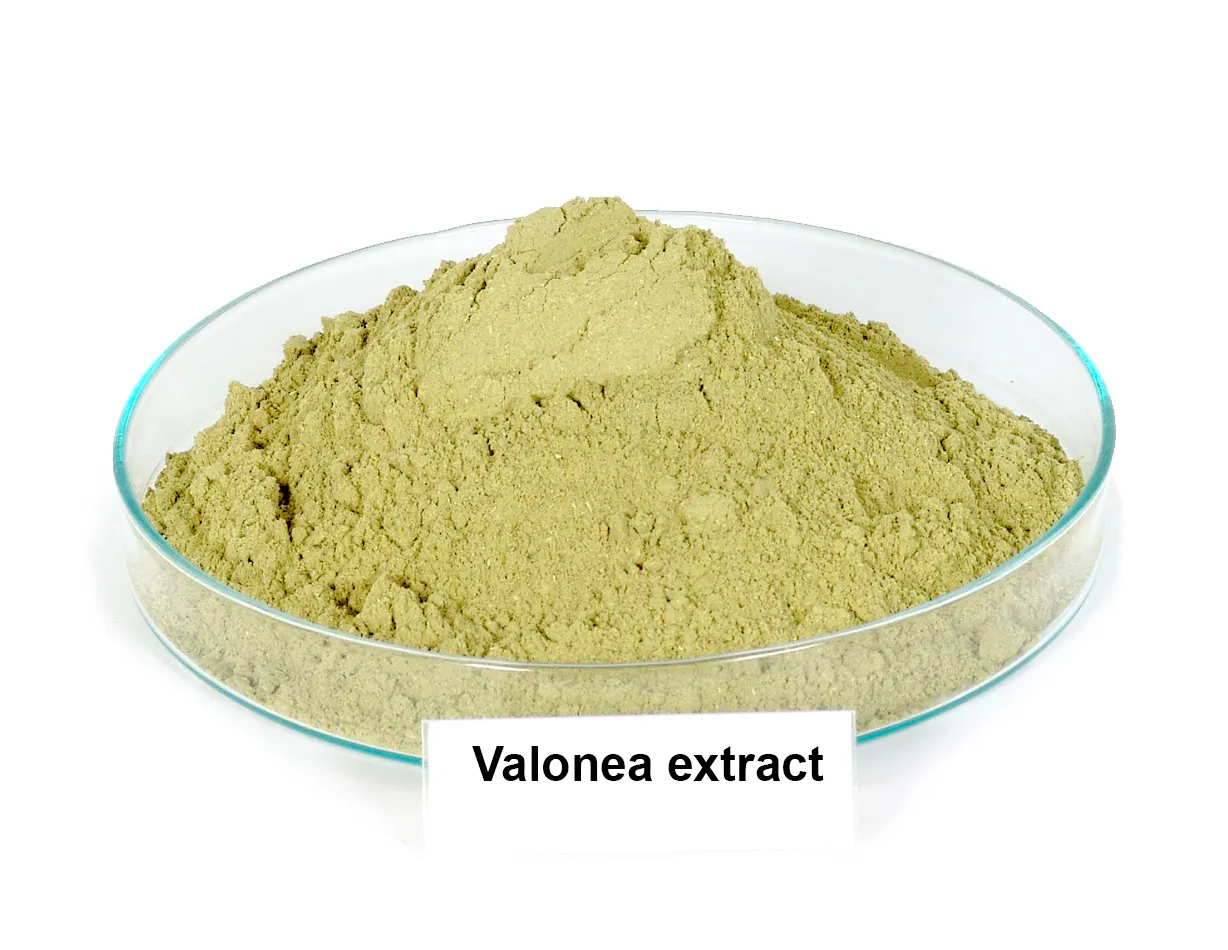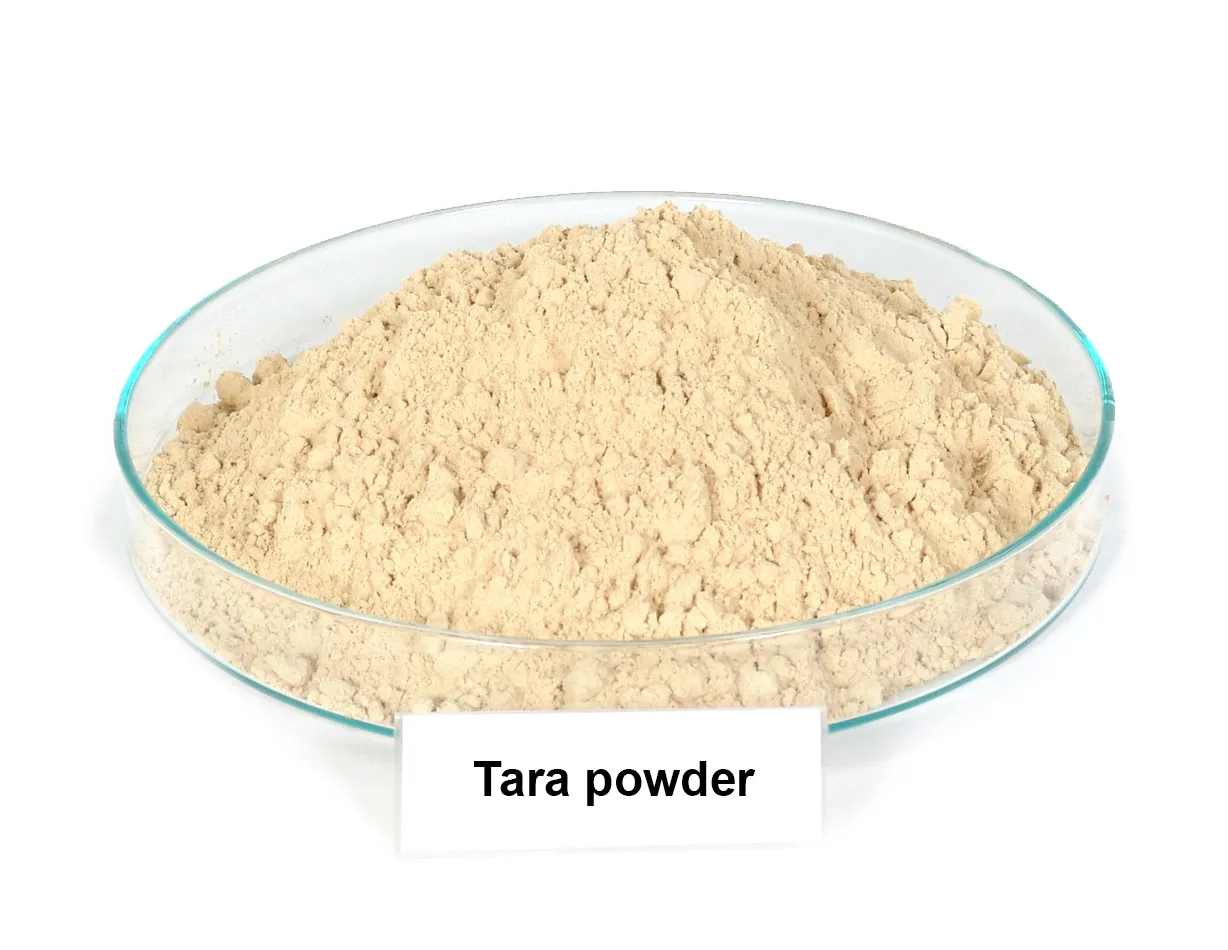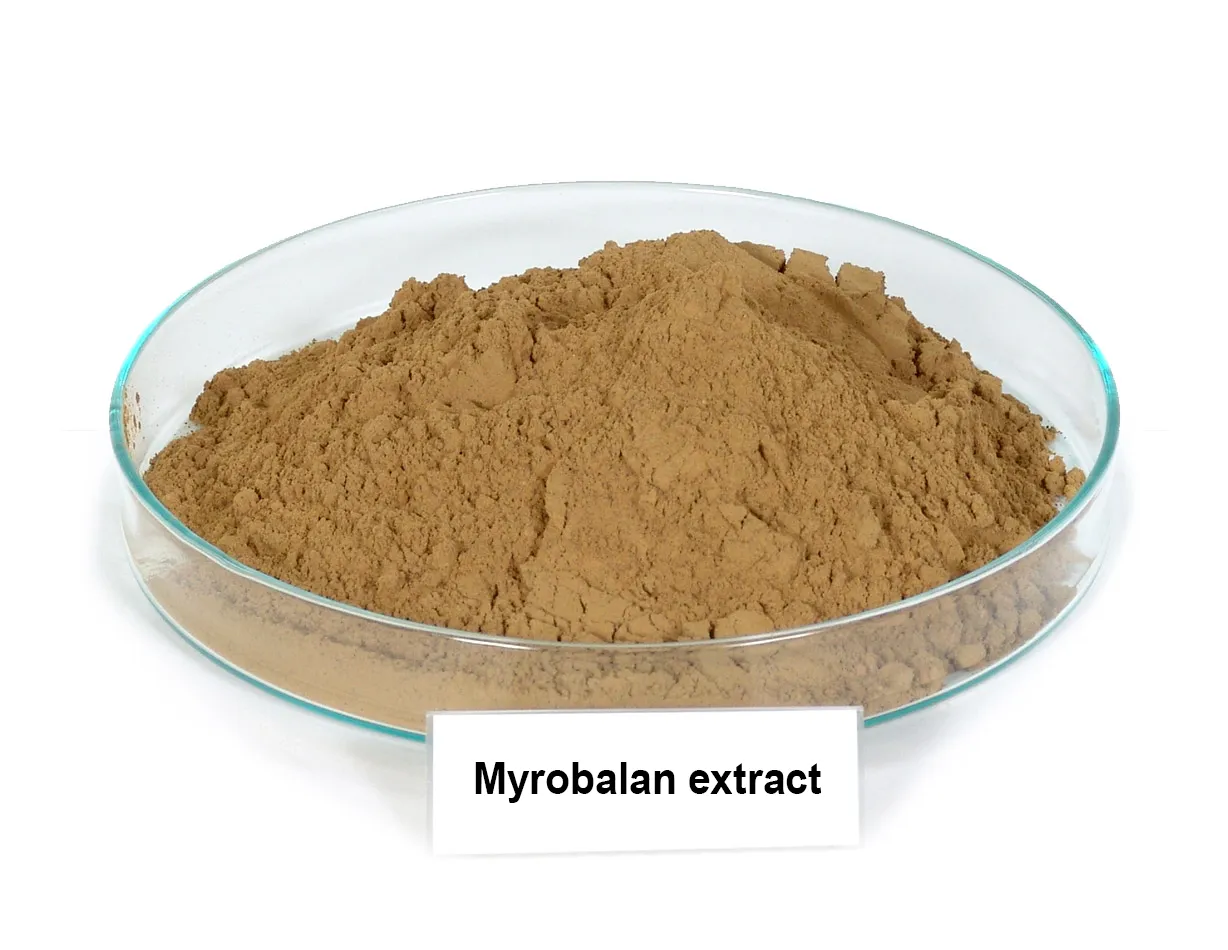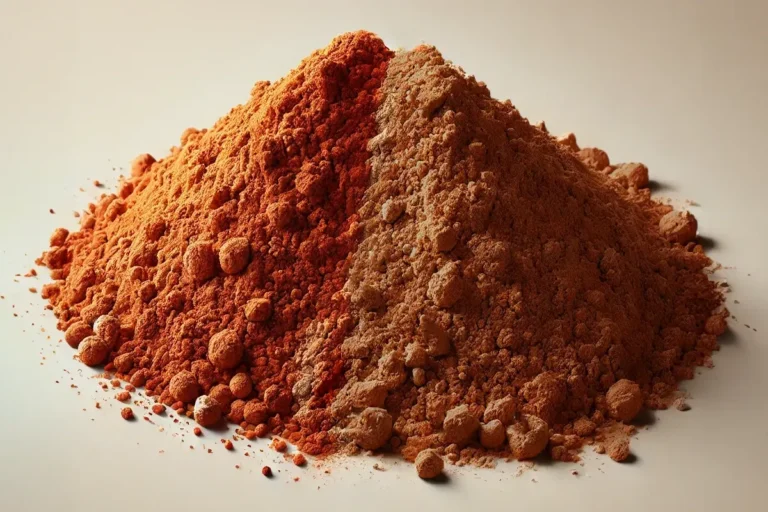Myrobalan Extract 
Botanical Name: Terminalia species, especially Terminalia chebula
Usage: For combination with other tannins, produces soft leather
Color: Red 1.5% / Yellow 3.0%
Description
Terminalia chebula is a tree with a round crown and widely spreading branches. Its main components include chebulagic, chebulinic acids, and corilagin. Its fruits have relaxing, stomach-soothing and tonic properties. The ingredients are also known as adaptogenic hepatoprotective agents. The fruit is astringent, tonic, laxative, carminative, fever-reducing and antiasthmatic. It is often used for hemorrhoids, pneumonia, throat inflammation, caries, gingivitis and diseases of the pancreas. Chebulin, extracted from the dried fruits, has a spasmolytic effect similar to that of poppy. Furthermore, the fruit is antiseptic, hypoglycemic and promotes blood clotting. The plum-like, tannin-rich fruit is often used for tanning and dyeing.
Applications
Mainly used in combination with other tannins, it produces strong sludge formation. The resulting leather is very soft.
Sumac Extract 
Botanical Name: Rhus coriaria
Usage: For soft, flexible and light-colored leather
Available Qualities
1. Light yellow spray-dried powder from Rhus cotinus
2. Yellow/kakhi-colored spray-dried powder from Rhus coriaria and Rhus cotinus
3. Yellow spray-dried powder from Rhus coriaria and Rhus cotinus
Description
Sumac extract is a tannin derived from various sumac plants: the best known are Rhus coriaria (tanning sumac), Rhus cotinus (smoketree), Coriaria myrtifolia (tanner’s sumac) and Rhus glabra (American sumac or white sumac), which belong to the sumac family (Anacardiaceae) and contain high levels of tannins. A known sumac in the region is the native staghorn sumac (toxic), but it does not yield usable tanning extracts. The extract is produced by leaching dried and ground leaves from trimmed branches. The powder is then obtained by spray-drying. In the Mediterranean, ground fruits of Rhus coriaria are commonly used as a spice.
Applications
Sumac-tanned leather is soft, flexible, and very light in color. Sumac is one of the finest but also most expensive tanning agents. It is used to produce fine leathers (Saffian, Morocco, Cordovan leathers), for tanning leather that should be especially light and soft, and for “sumachizing” — a kind of post-tanning with sumac extract to lighten the leather. It is also used for pretreatment of certain colored leathers. Sumac-tanned leather is notable for its excellent lightfastness. Sumac extracts are among the finest tanning agents and can produce almost white leather.
Gambier Extract 
Botanical Name: Uncaria gambir
Usage: For soft, elastic leather
Description
Gambier extract is a tanning agent obtained from the leaves of Uncaria gambir, native to Asia, growing about 10 degrees north or south of the equator. The plant grows wild as a shrub but can also be cultivated. Gambier extract is produced by extracting the leaves, sometimes with twigs, with water at 85-90°C and then evaporating the solution; the powder is then spray-dried.
Applications
Used alone, it produces very soft leather, mainly in the post-tanning of calf leather. It is also used in the post-tanning of chrome-tanned glove leather, as it provides remarkable fullness, softness, and elasticity.
Oak Bark 
Botanical Name: Quercus sessiliflora = Quercus robur
Usage: For firm, tough yellow-brown leather with dark edges
Description
Oak bark contains 6-17% tannins. The tannin content depends on the age of the bark and the time of harvest. The tannins have an astringent (contracting) effect. This is utilized in treatments with oak bark for baths, compresses and mouth rinses. Skin and mucous membrane diseases associated with severe itching can also be supported with oak bark baths. The Germans historically used oak leaves stored over winter to tan furs from sacrificial animals. The more tannin-rich oak bark is still the most important raw material for preparing tanning liquors.
Applications
Leather tanned with oak bark in a tanning pit produces very firm, tough, yellow-brown leather with dark edges and is still used especially for shoe soles in the higher price range and in orthopedic footwear. Due to the very long production time of this leather, manufacturing costs are relatively high.


